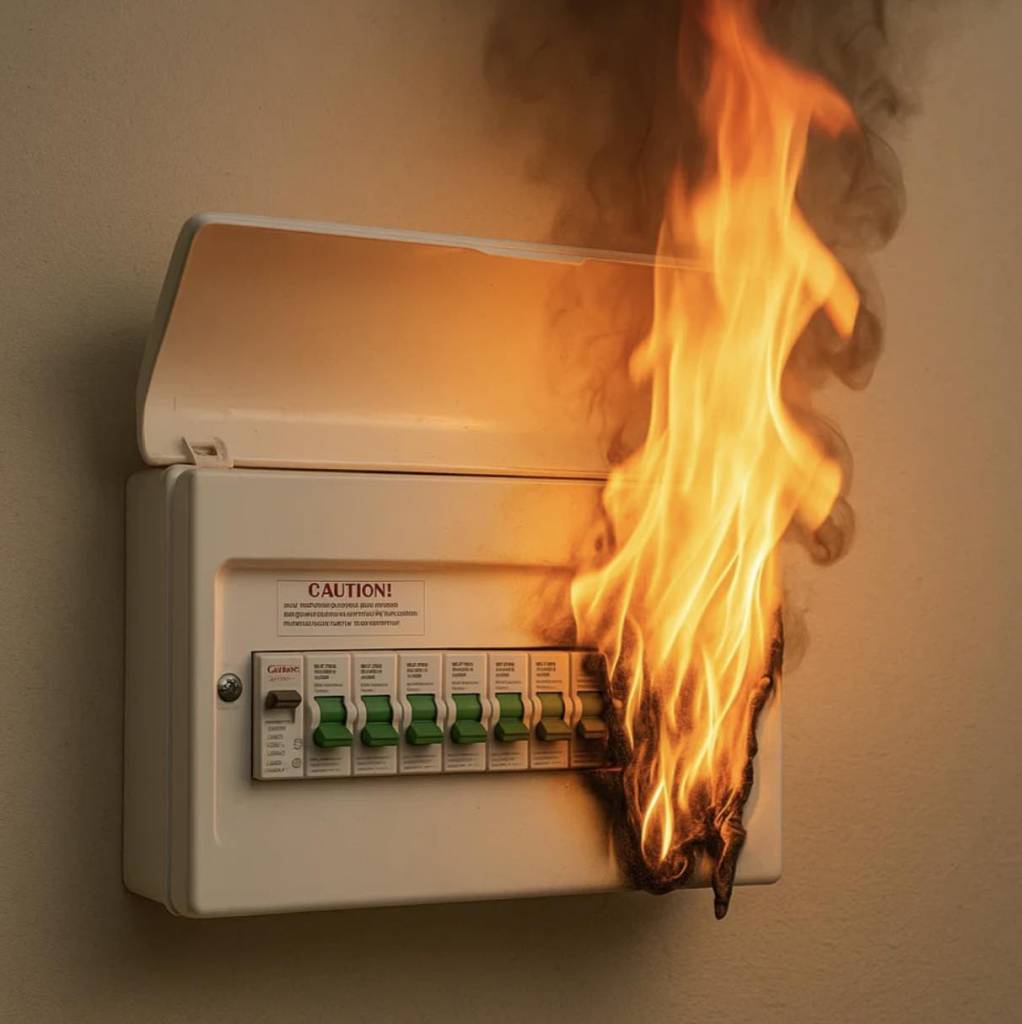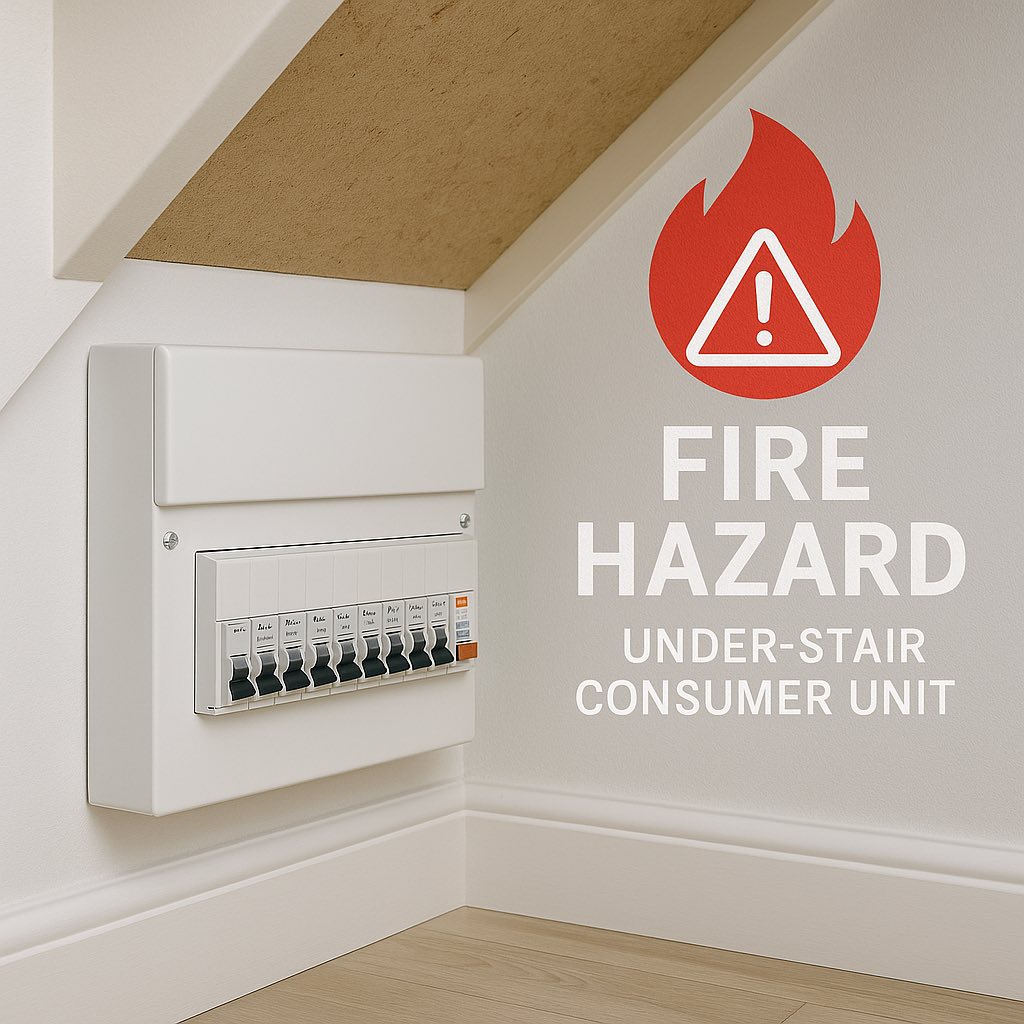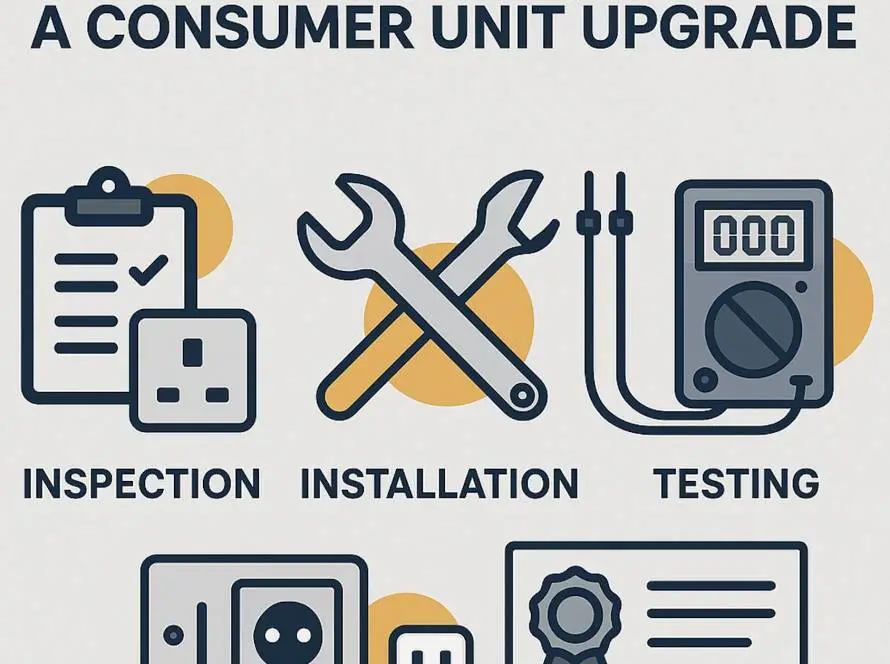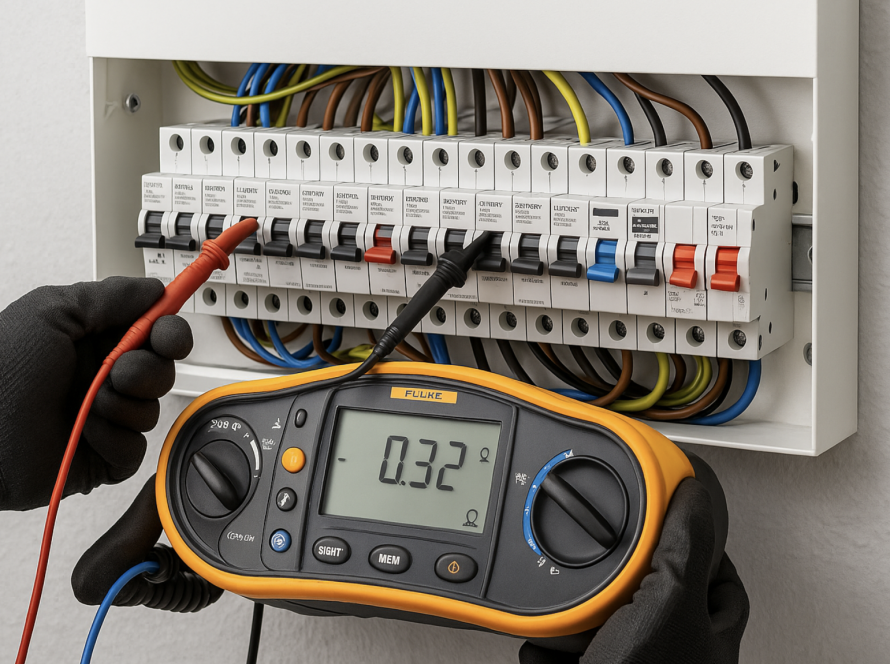Metal consumer units are now required for new installations under the 18th Edition of BS 7671. But homeowners and landlords aren’t legally required to replace older plastic units — unless there are safety risks. This post explains when an upgrade is recommended and how Anova approaches this issue during inspections.
Introduction
If you’ve recently had an EICR or spoken to an electrician, you may have been told you “need a metal consumer unit.” For many homeowners and landlords, this can feel like a sudden or unexpected expense, especially when the old one still works.
So, do you really need to upgrade? The short answer is: not always — but often, it’s the safest and smartest move.
Let’s break down what the regulations say, what’s changed in recent years, and when it’s time to consider a new board.


What Changed in the Regulations?
The push for metal consumer units began with Amendment 3 of the 17th Edition of BS 7671, introduced in 2015, and remains part of the current 18th Edition wiring regulations.
🔒 Regulation 421.1.201 of BS 7671 states:
“Consumer units… shall be constructed of non-combustible material or be enclosed in a cabinet or enclosure constructed of non-combustible material.”
The goal? To reduce fire risk caused by faults within consumer units — especially in homes where the unit is located under the stairs, a critical escape route in emergencies.
Are Plastic Consumer Units Now Illegal?
No — plastic consumer units are not illegal. If your installation was compliant at the time it was installed, it remains legally acceptable unless a safety issue is found.
That said, any new installation, including full rewires and consumer unit replacements, must use metal boards to comply with current standards.
If your current unit is in good condition, safely installed, and not in a high-risk location, there may be no obligation to replace it.

How Are Plastic Units Coded in an EICR?
This is where confusion often arises. Some clients are told their plastic unit has “failed” the report. That’s not how it works.
An EICR is not a pass/fail — it’s a condition report, and each observation is assigned a classification:
- C1 – Immediate danger
- C2 – Potentially dangerous
- C3 – Improvement recommended
- FI – Further investigation required
At Anova, we typically code older plastic consumer units as C3, unless there are additional risk factors such as:
- Location
- Poor condition or visible signs of heat damage
- Lack of RCD protection
- Overcrowding or overheating concerns
We take a case-by-case approach, because not all installations are equal — and not all consumer units pose the same risk.
Why You Should Consider Upgrading
Even when not mandatory, upgrading to a metal-clad consumer unit is a smart safety decision — especially in older properties.
Here’s why:
Fire Safety
Metal enclosures help contain internal faults or arc flashes, preventing the spread of fire — especially critical in under-stair installations.
Futureproofing
Modern units support:
- RCBOs (for individual circuit protection)
- SPD (surge protection devices)
- Easier circuit expansion and labelling
Improved Compliance
An upgraded board brings your installation closer to full compliance with the 18th Edition — and reduces the chance of future unsatisfactory EICRs.
Cleaner Reports
An upgrade can remove multiple C2 or C3 codes in one step, helping keep your paperwork clean for landlords, letting agents, or property sales
Domestic vs. Commercial Differences
While this blog focuses on residential properties, similar fire safety principles apply in commercial settings.
In commercial installations, consumer units (distribution boards) must also meet fire resistance and accessibility standards.
These often fall under additional regulations such as the Electricity at Work Regulations 1989 and Health and Safety at Work Act 1974.
If you’re a developer or commercial landlord, speak to Anova about distribution board compliance for your project.
What’s Involved in a Consumer Unit Upgrade?
A typical upgrade includes:
- Removal of the old unit
- Full testing of existing circuits
- Installation of a new metal-clad board with RCBOs and/or SPD
- Issuing of new EIC (Electrical Installation Certificate) and documentation
- Register installation with Building Control (Additional Certification)
Depending on property size, it usually takes half a day to a full day and should only be carried out by a qualified electrician.
How Anova Handles Upgrades
At Anova, we don’t pressure clients into unnecessary work — but we do advocate for safety. If your consumer unit is outdated, we’ll walk you through your options and explain the risks clearly.
We provide:
- No jargon, no confusion
- EICRs with honest, well-reasoned observations
- Transparent upgrade recommendations
- Modern metal consumer units with RCBOs and SPDs
- Full installation testing and documentation
How Anova Helps You Stay Compliant
You don’t have to replace a plastic consumer unit if it was compliant when installed — but if it’s showing signs of wear, located in a risky spot, or flagged during an EICR, an upgrade could be the safest and smartest next step.
Fire containment isn’t a luxury — it’s protection for your family, your tenants, and your investment.
Contact us today for advice, a second opinion, or to book a consumer unit upgrade or electrical inspection.
📞 Call: 02080516482
📩 Email: info@anovauk.com
💬 WhatsApp: Click the button below




